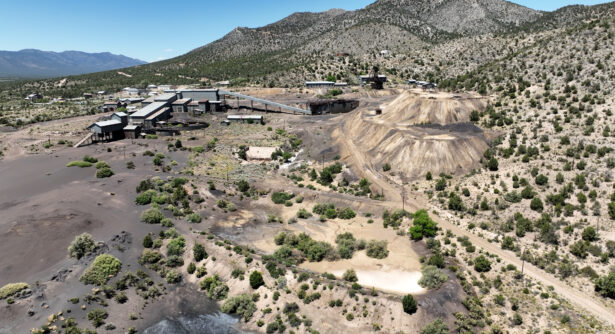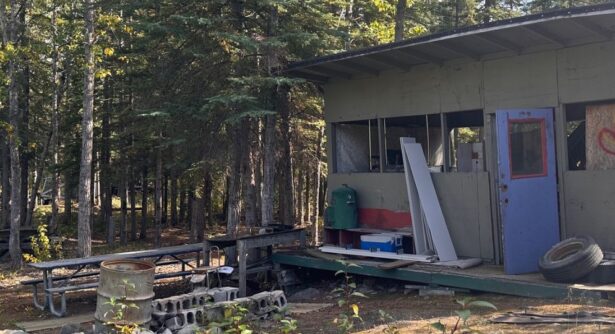
Reflections from Guam: Brownfields Take Root at the Conference on Island Sustainability
Senior Brownfield Revitalization Consultant Joy Britt & Senior Program Associate Lujain Altawarah recall their week at the Guam Conference on Island Sustainability
We are still buzzing with gratitude and excitement from a truly unforgettable week attending the 16ᵗʰ Annual Conference on Island Sustainability (CIS), in Tumon, Guam. This year marked a major milestone for the work we do at the Center for Creative Land Recycling (CCLR). Not only was this the first time CCLR visited Guam, but also the first time in CIS history that the topic of brownfields and land revitalization were featured as a key topic—and not just in a breakout session, but on the main stage.
Breaking New Ground for Brownfields
We were honored to represent CCLR and lead this important conversation. Joy was invited as a keynote panelist, joining visionary leaders from across the region to speak about “innovative solutions” where she focused on how land reuse can support island resilience, economic development, and climate adaptation. In addition, we hosted a breakout session where Lujain dove deeper into how brownfield sites—often overlooked—can become assets that heal communities.
On such small islands, land is precious, and so is the history it holds. Yet many Pacific communities are burdened with brownfields. These lands are often legacies of past military use, abandoned infrastructure, or aging fuel storage systems. While they may look like empty lots or overgrown plots, brownfields represent both risk and opportunity—risk to community health and the environment, but also opportunity for renewal, economic development, and cultural preservation.

Joy on stage as a Keynote Panelist
During the keynote, Joy’s message was clear, “these lands are our relatives, and we need to care for them just like family.” It was incredibly validating to see how this message resonated with so many attendees. For islands facing pressure from military legacies, coastal erosion, and limited developable land, brownfields are more than a cleanup issue—they’re an opportunity.
Island Beauty, Island Strength
Being in Guam was deeply personal for Joy, who was raised there and carries deep ties to the land and people. And the hospitality we both experienced throughout the week was heartwarming. From government leaders to students, nonprofit professionals to elders, every person we met carried a shared sense of responsibility, culture, and community. Joy was able to perform a site visit and participate in Earth Day efforts with the Guam non-profit, Kurason I Sengsonng – whose aim is to foster community for young and old by rehabilitating land and providing a space for community gardening and nature walks through one of Guam’s rare limestone forests.

Joy spending Earth Day cleaning up with Kurason I Sengsong
The island itself is breathtaking with rolling green hills, sparkling shorelines, and the sound of the ocean always close by. It reminded us how important our work is: protecting and restoring land that holds meaning and memory.
A Regional Movement Takes Shape
One of the most powerful parts of the conference was seeing delegates from across the Pacific. Representatives from Hawai’i, the Northern Mariana Islands, the Marshall Islands, and more, all coming together to share solutions. We had conversations about how remediated land can support clean energy infrastructure, housing, and public spaces that celebrate cultural identity. We were also able to see the support of food sovereignty and a circular economy in action by attending a conference field trip tour of the island’s capital, Hagåtña.
Our group of 30 visited the Guam Green Growth (G3) Circular Economy Makerspace & Innovation Hub, where they witnessed cutting-edge sustainability initiatives led by the University of Guam. Here, any entrepreneur can utilize high tech machines to recycle goods from trash to treasures that can be sold to support not just their business but promoting a circular economy to locals and tourists. We then visited the G3 Hagåtña Community Garden, a free community garden that encourages local efforts in urban agriculture. Lastly, we did a deep dive into Guam’s heartbreaking yet beautiful history at the Guam Museum and ended the tour dining on local cuisines at the Chamorro Village.

Learning about cutting-edge sustainability initiatives at the Guam Green Growth (G3) Circular Economy Makerspace & Innovation Hub
From the get-go, the “island style” energy was contagious. People were ready to talk brownfields, ready to learn, and most importantly, ready to act. We made meaningful connections with governmental leaders, agency staff, and fellow participants who want to bring brownfield tools to their own islands.
Inspiring the Next Generation of Leaders
One of the most inspiring moments for us was seeing how deeply engaged the region’s youth were throughout the week. The Island Sustainability Youth Symposium, held alongside the main conference, brought together young leaders and environmental advocates to exchange ideas and develop actionable solutions for island communities. It was powerful to see these students and young professionals collaborating on real strategies to tackle climate change, conservation, and sustainable development in their own backyards.
After our breakout session on brownfields, Lujain sat with members of the CNMI Youth Congress — a remarkable group of young leaders, from middle school to high school, who are already writing and passing legislation in their communities. For many of them, it was their first time learning about brownfields and the possibilities for transforming neglected sites into community assets.
Their energy and curiosity made it clear that the next generation understands the value of land revitalization and is ready to champion it. Conversations like these remind us that true sustainability means empowering young leaders with knowledge and tools to shape their own futures — and that brownfield advocacy can be an integral part of that journey. CCLR is honored to help spark these conversations and stand alongside island youth as they envision and build healthier, more resilient communities.
Looking Ahead with Purpose
Attending CIS 2025 was more than a professional experience, it was a reminder of why we do this work. It was a privilege to introduce brownfields to a new audience, especially in a setting where every inch of land is precious. We’re leaving Guam more committed than ever to supporting island communities across the Pacific in reclaiming contaminated lands and creating healthier, more resilient futures.
As the EPA’s Technical Assistance to Brownfields (TAB) provider for Region 9, CCLR offers free technical assistance to communities, Tribes, and nonprofits across the Pacific.
Through webinars, one-on-one consultations, site visits, and grant support, CCLR helps local champions move from stalled sites to reimagined futures. Whether you’re starting with a windshield survey or working on a full cleanup grant, CCLR is a resource every step of the way.
To amplify peer learning, CCLR also facilitates the Pacific Islands Brownfields Peer Group, a network of community leaders, agency staff, and local organizations working in Hawai‘i, Guam, American Samoa, and the CNMI.
Peer Group members share:
- Success stories and local innovations
- Common challenges and funding hurdles
- Cultural and ecological approaches to land restoration
- Opportunities to advocate for island-appropriate solutions
The challenges are real but so are the tools and partnerships available to overcome them. From transforming abandoned dumps into parks, to repurposing military infrastructure for housing or food sovereignty projects, brownfield sites in the Pacific are being reclaimed by and for local communities.
If you’re working on, or even just curious about, brownfields in your Pacific Island community, reach out to CCLR for support. You don’t have to do this work alone.
We’re grateful to the University of Guam’s Center for Island Sustainability, and every person who made the conference so special.
With warm hearts and full spirits,
– Joy & Lujain
Center for Creative Land Recycling (CCLR)
🤝 Want to join the Pacific Islands Peer Group? Contact Joy to be added to the invitation list for quarterly calls and trainings.

Joy and Lujain taking in the sunset




